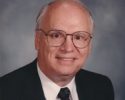A central role in reducing K-12 teacher shortage
By Dr. William A. "Bill" Marzano and Dr. Hans Andrews
August 3, 2022
K-12 teacher shortages are a continuing and growing challenge throughout our nation. In Illinois, for example, the estimated shortage of teachers, substitute teachers and other staff positions in 2021 was 6,200, up from 4,800 in the previous year. Similar data are reported from many other states.
It is not only an issue of quantity but also of demographics. A more diverse teacher workforce is needed to more closely mirror the demographics of the students they teach.
A variety of “short-term” fixes have been proposed or implemented in an effort to get a teacher in every classroom, including:
- Allowing retired teachers to work more with no deduction to their pensions.
- Assigning larger workloads to current teachers.
- Using paraprofessionals and not-fully-credentialed substitute teachers.
Essentially, these solutions attempt to extract more coverage from existing human resources. Furthermore, the shortage has been exasperated by increased retirement and early retirement rates wrought by the Covid pandemic. Only new, additional human resources can overcome this shortage in the long run.
Normally, teacher preparation programs of colleges and universities would supply the “new blood” for the profession. Unfortunately, this traditional pipeline has been diminishing for some time. Nationwide, higher education enrollment has been on a decline for more than a decade, and the decline in enrollment in teacher preparation is even more severe. Realistically, the current system cannot provide enough new educators to overcome the shortage nor provide the more diverse faculty needed in the K-12 system.
The American higher education system is distinguished and made most unique by the presence of its community and technical colleges. Positioned between the K-12 system and traditional baccalaureate-granting colleges and universities is the system of more than 1,200 community colleges. It is an American invention and may play an increasingly important role in addressing the K-12 teacher shortage.
Below, we offer recommended practices that can contribute to recruiting and training the much-needed new and more diverse crop of future K-12 faculty.
Early start and dual credit
We cannot wait until high school students start higher education to recruit them to become teachers. It must start earlier. Educators Rising is a national program which has proven to attract significant numbers of high school students to learn more about teaching as a career option. For the current school year, Illinois has invested in a statewide license for Educators Rising so that all high schools can use this recruitment program.
Also, high school students can get an “early start” on college work if their school has a dual-credit partnership with its local community college. Dual-credit courses are college-level courses delivered in a variety of settings for which secondary students also receive credit towards high school graduation requirements.
Such courses are a relatively safe testing ground for college level-work and get the student thinking about postsecondary education. Thus, a dual-credit course, such as Introduction to Education, can provide the first step on a path to postsecondary education and a choice of a major. Dual-credit should be a base program provided by all community colleges and a vital component in early recruitment and engagement of future K-12 teachers.
Four-year partners
The next level is to extend that partnership to a senior institution. For future teachers, it would involve taking introductory education classes for dual credit as high school students, enrolling in their community college to complete an associate degree, and then transferring to a senior college or university that partners with a community college for the completion of their teacher preparation.
This model already exists in Illinois through career and technical education (CTE) grants from the Illinois State Board of Education (ISBE) and a program called Scaling Education Pathways in Illinois (SEPI). These pathways are affordable, accessible and draw from the diverse populations of the local school districts.
A variant of this model involves the partner university sending its faculty to the community college campus to offer the junior- and senior-level course work needed for the completion of the baccalaureate in teacher preparation. Such a partnership between Elgin Community College and Northern Illinois University has already graduated one cohort of licensed teachers in elementary education with a bilingual/ESL endorsement. These newly minted teachers enjoy a priority hiring status in their local K-12 district.
Granting baccalaureates
An optimal solution for recruiting a highly diverse crop of future teachers is to grant the community colleges the authority to offer the teacher baccalaureate. This solution has been used in critical job areas such as nursing, and it has already been implemented for teaching in Florida with significant results. Such programs attract not only traditional, younger students but also older adults who otherwise could not become teachers without such an accessible and affordable pathway.
Current higher education legislation in most states prohibits this authority to community colleges. Granting permission to offer a bachelor’s degree in teaching to all or a targeted number of community colleges would require a coordinated and intense lobbying effort by stakeholders. It may be seen as a drastic step by some. The severity of the teacher shortage in a given state or in portions of a state will influence how seriously this option is considered. But this new role for community colleges may be necessary to address the shortage both in quantity and diversity of K-12 teachers.
There’s more to the story! Read the full article in CC Daily.




